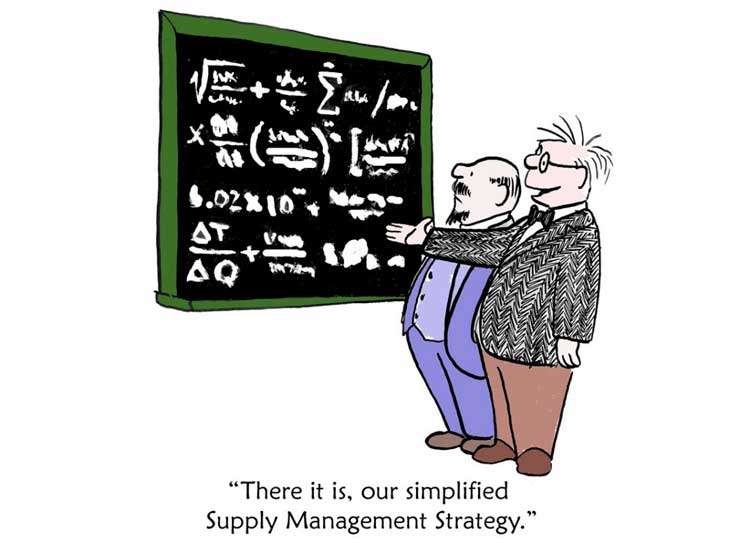-
Lean vs. Agile: Understanding Supply Chain Management Strategies and Finding One That Works For Your Business
When we talk about supply chain management strategies, there are two key approaches to understand. Lean and agile supply chains are often pitted against each other as an either-or option. There are pros and cons to each, and you’re expected to pick one that’s the closest fit for what your business needs.
But there isn’t a one-size-fits-all approach to supply management. While there are certainly similarities in how procurement, production, and distribution work for each company, it’s also a very individual process. Some companies find that a very lean system works best. Others need the flexibility provided by an agile approach to supply management.
Even more companies find that their needs fall somewhere in between the two options. Most companies benefit from a hybrid approach to supply chain management that brings in the benefits of both lean and agile strategies. But before you can decide which supply chain strategy is best for your company, you have to understand your options.

Two Different Strategies:
Lean
Lean supply chain management is all about reducing costs and waste. This method is focused on efficient, streamlined operation. Typically, the supplier has one point of contact across the entire company and one contract governing their relationship. They offer the same price to all a company’s locations.
In a lean approach, anything in the process that doesn’t add value for customers is eliminated. When implementing a lean supply chain, you’re constantly looking for ways to remove layers of waste and only take steps that add value to a product or service.
Lean strategies rely on forecasting to predict how much inventory will be needed to meet demand. In some lean supply chains, products are made on an as-needed basis so there’s no unnecessary overproduction. The lean approach is best in markets that don’t vary a whole lot. Functional and necessary items like toiletries fit in this category.
Agile
Agile supply chain management prioritizes adaptability. It’s for organizations that want to quickly adapt to changing situations. This method makes it easier to adjust sourcing, logistics, and sales in response to factors including economic swings, technology changes, and customer demand.
Typically, an agile supply system waits to see what the market demand is before finishing production. Short-term forecasts help companies stay responsive, but a key aspect of agile supply chains is that they respond to demand as it happens. This approach is useful when producing fast-changing and customizable items like fashion wear.
An agile supply chain typically results in short order lead times. It’s also quick to respond to customers. And when something unexpected happens, such as a regular supplier not being able to fill an order, the system enables flexibility. You can also respond more quickly to new market opportunities with an agile supply chain.
Bringing In A Third Option
The benefits of each supply management strategy are outlined in the descriptions above. But there are also downsides to the different approaches. A lean supply chain is cost-conscious and efficient, but it won’t be able to respond to new demands quickly. On the other hand, an agile supply chain is highly adaptable, but it can become hard to control and predict.
The good news is you don’t have to pick just one of these approaches to supply chain management. Between extreme leanness and extreme agility lies a hybrid approach where you can customize what works for your organization. You might favor one approach while borrowing just a few elements from the other. Or you might try to find a middle ground to take equal advantage of both sides.
Benefits of Hybrid Supply Chains
Some experts say that a hybrid approach is the best fit for most companies. You can keep your supply chain agile and flexible enough to meet your needs while still cutting out aspects of the process that don’t add value for your company. It lets you customize a strategy that works for your company and get the best of both worlds.
So how does this work in the real world? Here are two examples:
- The apparel brand Benetton uses lean supply chain strategies to predict how many garments to make in each style. They make the garments to meet the forecasted demand, but leave them un-dyed until customers select which color they want. Their responsiveness to consumer demands is borrowed from agile supply chain strategies. With this hybrid approach, Benetton can remain responsive to their customers while keeping the supply chain efficient.
- Another hybrid example comes from Kimberly Clark, which owns brands such as Kleenex and Huggies. For their established products, they use a lean supply chain strategy because the demand is fairly steady. But when they’re promoting a new product they use a more agile approach to ensure they’re able to respond to the demand even if it’s higher or lower than expected.
Automation Can Help
No matter where you fall on the lean-to-agile spectrum, business process automation (BPA) can help. Procurement software like NextProcess’ Purchase Order Module increases your control over the procurement aspect of supply chain management. It provides more accurate and accessible purchasing insight, which helps you identify ways to make the purchasing system leaner.
Because automated e-Procurement systems are highly configurable, you can adapt your new system to be as agile or lean as you need it to be. BPA systems also automatically enforce company policy and best practices, helping you keep your chosen supply chain management method in place.
If you’re ready to try out purchase order and procurement software for yourself, get in touch with us. We’ll set up a free demo so you can see first hand how our software can help you achieve your supply management goals.